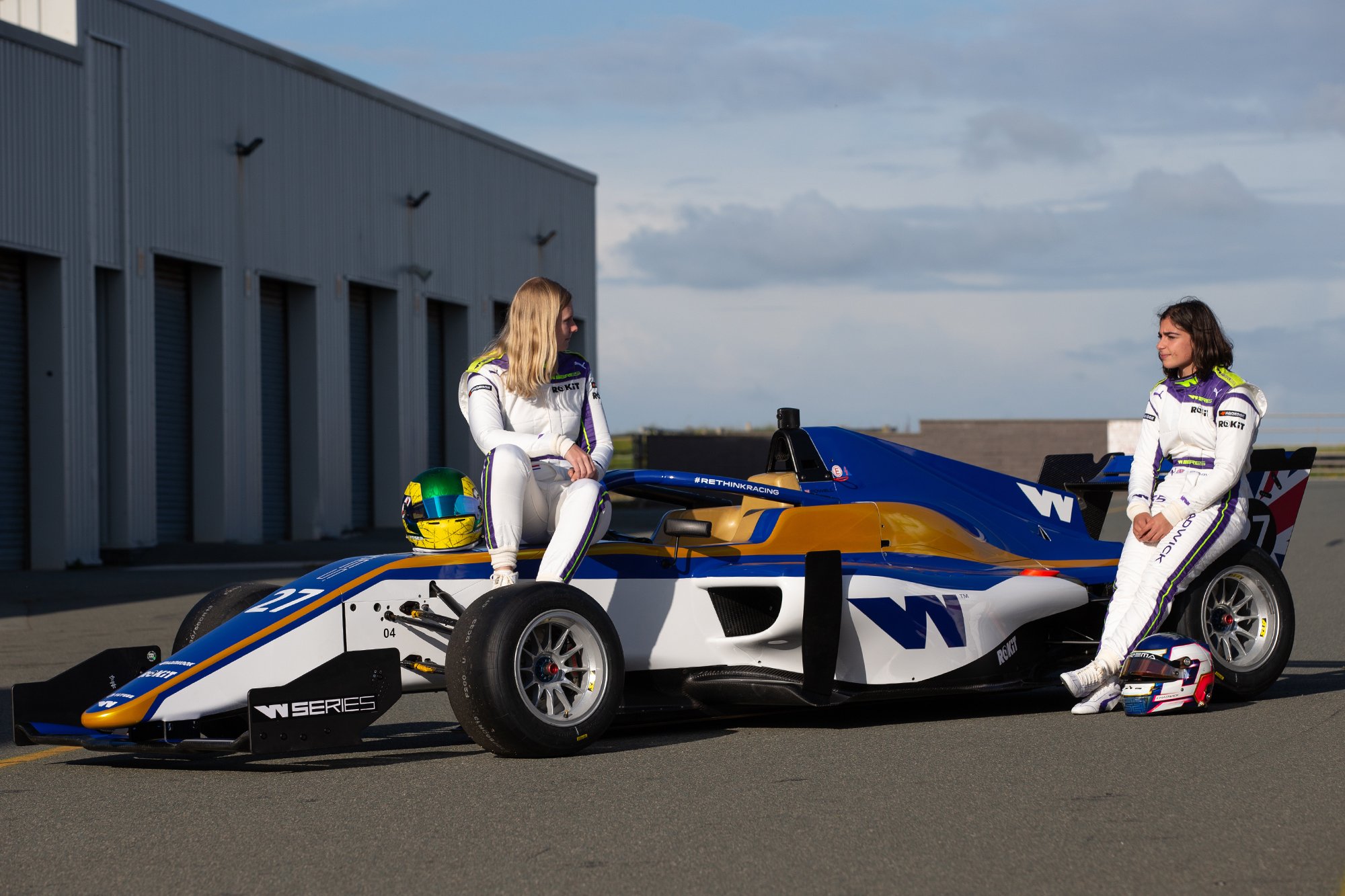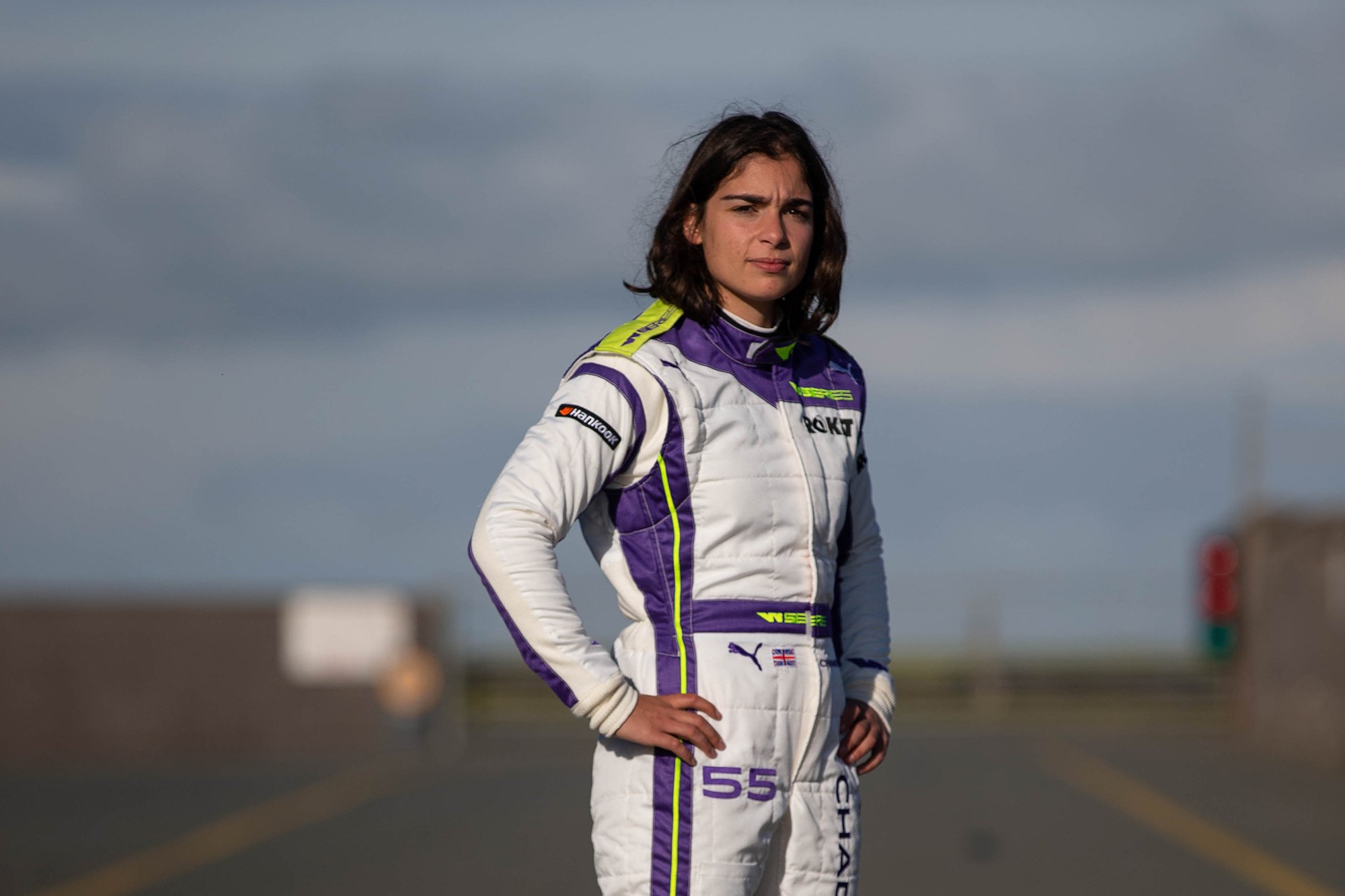The future is female – suits for female race-car drivers
Though it wasn’t always the case, there are now many women piercing through the male-dominated sport of race-car driving – some whom we have talked about on ellectric – and yet, men are still at the centre of both design and media representation. Much like in other fields within mobility, most brands come up with designs based on men, and then advertise their products using men – almost as if women didn’t really have a place in the industry. There is of course some progress, especially among younger companies and startups that promote equality practices and equal representation and in turn influence the bigger companies’ mindsets, but it’s a slow process, and car racing – a historically male-dominated sport – is no different.
The issue for female race-car drivers
Interestingly, the car racing industry experienced some economic growth once women entered the field in the 1950s, perhaps because it gave the sport more visibility among a larger target group – women do make up 50% of the world population after all. Car racing is also one of the only sports in which women and men can even compete together, which should in theory create a fruitful foundation for more equality among genders. Disappointingly, this hasn’t yet been the case – instead, men are still largely placed at the centre of car racing, including in one of its most important aspects: the suits.
Supposedly, the current racing and fire suits used by professional racers were created with a unisex design, but in actuality, they were designed using the male anatomy. Of course, female bodies are built differently than male bodies and therefore have different needs, like a narrow fit or more neck support for instance. Women are also much more likely to be injured in collisions and accidents when racing to begin with simply due to anatomical differences, so the fact that their suits don’t fit them or protect them as they should only increases the risks.
On top of these incredibly important safety reasons, there is also the issues of comfort, gender equality and identity. As any race-car driver will tell you, the suit plays a vital role in racing – it needs to feel almost like a second skin and an armour at the same time in order to allow them to perform in the best way they can. This means that these current “unisex” suits inherently cause some discomfort for female drivers, and therefore impact their performances.
“A racing driver has to feel comfortable in the car, and feeling relaxed in what we are wearing goes a long way to achieving this.” – Abbie Eaton, a W Series driver and test driver for Amazon Prime’s The Grand Tour.
We at ellectric believe that equality should never mean suppressing gender differences – it actually means embracing them. This is also an issue when it comes to these suits, as they don’t allow female drivers to celebrate or express their femininity in any way, all the while already being in a male-dominated sport. Of course, progress takes time – but merely creating a space for women in the industry without actually catering to them doesn’t amount to true gender equality.


The W series & other initiatives filling in the gap
Initiatives like the W series have been putting women on the forefront for some years now. The free-to-enter championship, which launched in 2018, provides equal opportunity to women in the sport. In 2021, they announced that their partner Puma Motorsport would tailor its race wear with a female-first design. Race suits for female racing drivers have traditionally been redesigned versions of those initially made for their male counterparts, but in 2021 W Series staged eight races in partnership with Formula 1 in which drivers competed in race wear tailored specifically for the female body from the very start of the design process.
“W Series keeps breaking barriers as we today announce the continuation of our partnership with PUMA, who have once again shown their commitment to our mission by tailoring racewear specifically for our female racing drivers. We are determined to change the face of motorsport and PUMA will play a big part in that this year when we race in partnership with Formula 1.” – Catherine Bond Muir, Chief Executive Officer, W Series
Other companies have also started designing race suits for women specifically, including OMP racing, who came out with their “FIRST Elle Suit” in 2020. Alpine Stars and Sparco have also created female suits, and more companies are following the long-overdue movement.
The future for female race-car drivers
So what does the future look like for female race-car drivers? Well, first of all, it needs to have women as a central part to the design processes and media representation of the sport, just like their male counterparts. We also hope that in the future, sponsors and organisations keep on pushing female drivers forward by providing them equal opportunities. What we hope we don’t see, however, is purplewashing – the term used to describe brands and companies who use feminism as a marketing ploy in order to increase profits. Instead, female drivers and we at ellectric want to see real inclusivity and equality, and we can’t wait to see what all of the amazing women in race car driving do in the future.
We at ellectric thrive on the feminine perspective and putting female mobility issues in the limelight. If you want to learn about some of the amazing women who have shaped the mobility industry, read the piece here. If these are also topics that interest you, we have a lot more where that came from. Read more interviews and articles in our “elle” section of the magazine.
Pictures: W series + Puma Motorsport

